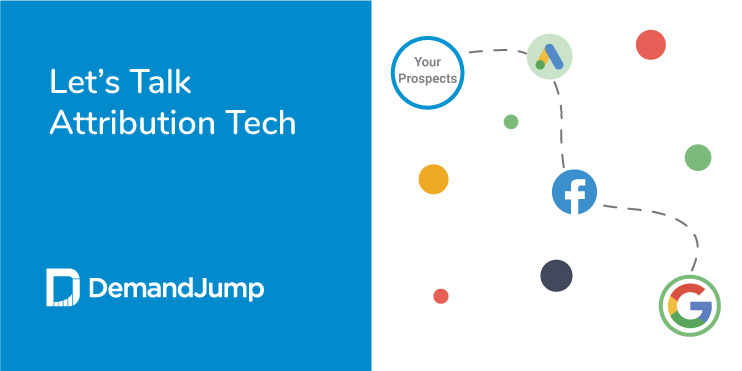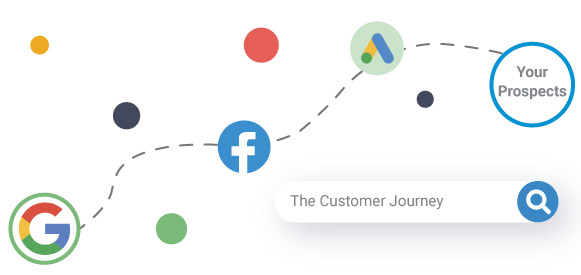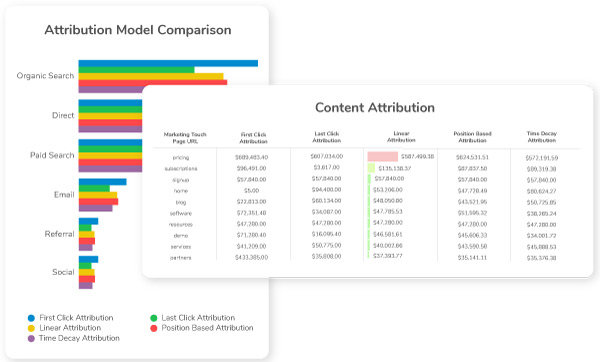A Guide to Attribution Technology
January 3, 2022 •DJ Team

Learning more about your customer helps you create future marketing strategies that are more targeted, efficient, and have a greater chance of leading to conversion.
Marketing attribution technology helps you identify how customers tend to respond to specific touchpoints across multiple channels—ads, social, blogs, videos, web pages, and all other digital media.
Know the behavior and response of your audience to these touchpoints, and adjust your marketing strategy to see the best results.
Marketing attribution measures these interactions and assigns a value—or weight—that represents each interaction’s sway on the customer and its likelihood of leading to a sale.

But each customer’s path to conversion is complex and usually includes multiple variables that are difficult to track. Marketing attribution platforms help track these complex, varying paths to conversion.
Attribution technology leverages machine learning and algorithms to find patterns in consumer responses to digital marketing. But you need a strong software platform that can take into account the various attribution models to see what’s actually working with your customers.
Marketing Attribution Models
A good marketing attribution platform uses all types of attribution models to account for the different ways customers interact with your marketing.
Marketing attribution stats reflect both simple and complex sales cycles, and it’s important you identify which is more prominent for your particular business so you know which attribution model is more appropriate.
Attribution models can be categorized as either single touch or multi-touch.
- Single-touch models give all credit to a single interaction with a customer. For instance, when a customer clicks on an ad that leads to a purchase, that individual ad receives all the credit, even if the customer has consumed other marketing content in the past.
- Multi-touch models track a more complex sales cycle. They disperse credit to multiple touchpoints that impacted customers, with the understanding that customers aren’t only influenced by a single ad or interaction.
First click/last click models
These are both single-touch attribution models that put all credit on a single interaction with the customer. For instance, regardless of how many advertisements a customer has seen, the last ad they see that they click on and leads to a purchase is deemed the most valuable. Attribution technology is used somewhat, here, to track clicks. But it’s a simple model.
Time decay/linear models
Slightly more complex, time decay and linear models assign value to the multiple interactions a customer has with your brand. Linear models distribute value evenly across each interaction, while time decay models put additional weight and value on the interactions and touchpoints leading up to the “last click” that leads to a conversion.
Using these models, attribution technology further maps the journey of a customer, but this is still lacking in providing a full glimpse of the unique characteristics and behaviors within individual sales cycles.
Data-driven models
Attribution technology is most prominent and useful in the data-driven attribution model—also known as the algorithmic model. This attribution model utilizes machine learning to input a large number of customer interactions into algorithms that paint a more complete picture of the various ways customers interact with your brand.
But data-driven models are restricted by the quantity and quality of data from customer interactions. You need software that’s capable of tracking customer actions with as much transparency as possible. Otherwise, a simpler model might be more effective.

(DemandJump's automated attribution solution provides views of all attribution models so you have multiple views of campaign performance.)
What Is Marketing Attribution Software?
Attribution software follows the movement and pathway of consumer journeys online through multiple channels, tracking clicks, impressions, cookies, and tags to learn how a customer is interacting with your brand. It then applies these behaviors to various attribution models, mentioned above.
The software uses different attribution models to weigh the importance of those interactions.
Marketing attribution model machine learning—present in the data-driven model, especially—systematically tracks a massive amount of consumer data to provide insight on behavior, response to marketing strategy, and sales cycle patterns.
This provides a comprehensive look at how all your customers are interacting with your brand, and it learns from nuances in individual cases.
Attribution Tools
A list of attribution tools would include a pretty extensive list of attribution software that’s easily available to marketers today. Get started with Google Ads, for example, and use their “Measurement” tools to see how different attribution models reflect your customers’ interaction with your brand. But even Google Ads defaults to the “Last click” model.
While data-driven models and those that track a more complex sales cycle require more effort, time, and expense, they ultimately tell you more about your customer.
DemandJump uses attribution technology to help you learn more about your brand based on customer interactions. Automated account-based attribution software tracks touchpoints and interactions with customers, identifying patterns and information that can inform your marketing team on best practices and approaches moving forward, improving your ROAS.
Learn how specific keywords drive sales and know which pieces of content contribute to a conversion. Get a demo today!
Featured Articles
Categories
- Attribution Tracking (13)
- Channel Optimization (11)
- Consumer Insights (68)
- Content Marketing (251)
- Data Science (8)
- Digital Marketing (6)
- Digital Transformation (26)
- Enterprise (10)
- Lead Generation (14)
- Market Intelligence (8)
- Marketing Analytics (39)
- Marketing Attribution (57)
- Marketing Management (153)
- Marketing Operations (86)
- Organic Search (222)
- Paid Search (52)
- Pillar-Based Marketing (63)
- Programmatic Advertising (9)
- SaaS Content (14)
- SaaS Marketing (29)
- Search Marketing (111)
- SEO Keyword Research (28)
- SEO Pillar (18)
- SEO Strategy (46)
- SMB (5)
- Website Content (12)


